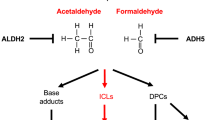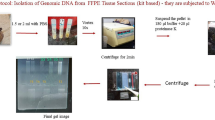Abstract
The accumulation of single nucleotide polymorphisms (SNPs) in the displacement loop (D-loop) of mitochondrial DNA (mtDNA) has been described for different types of cancers, and the association of these SNPs with cancer risk and disease outcome has been exhaustively studied. We sequenced a region of approximately 1 kb flanking the majority of the D-Loop in the DNA from the blood of breast cancer patients and the controls to identify cancer risk-associated D-loop SNPs. The D-loop region of mtDNA was sequenced from 92 sporadic breast cancer patients, 60 familial breast cancer patients and 41 relatives, and 93 healthy controls. Paired and unpaired Student’s t tests were used as appropriate to determine the differences in SNP distribution within the D-loop region and in the number of SNPs per patient among the groups. The χ 2 test was used to analyze dichotomous values, such as the presence or absence of an individual SNP among each group, and the clinical characteristics between every two groups. The distribution frequencies of 315C/Cinsert, 524C/del, 16247A/del, 16248C/del, 16249T/C, 16257C/A, 16258A/del, 16259C/del, 16262C/del, 16268C/del, 16279C/del, 16280A/del, 16297T/C, and 16300A/del were significantly different between sporadic breast cancer patients and the normal controls. The SNP sites at nucleotides 310, 315, and 16362 were identified as cancer risk-associated SNPs specific for familial breast cancer. The N haplogroup, defined as 489T, was identified as a specific risk-associated SNP for families of breast cancer patients by comparing familial breast cancer patients with their relatives. The analysis of genetic polymorphisms in the D-loop may help to predict cancer risk for familial breast cancer and thereby help to detect and refine therapeutic decisions earlier.
Similar content being viewed by others
References
Ferlay J, Shin HR, Bray F, Forman D, Mathers C, Parkin DM. Cancer incidence and mortality worldwide. IARC Cancer Base No. 10 [Internet]. Lyon (France). IARC 2010, Available from: http://globocan.iarc.fr.
Ozmen V. Breast cancer in the World and Turkey. Journal of Breast Health. 2008;4(2):2–5.
Kelsey JL, Whittemore AS. Epidemiology and primary prevention of cancers of the breast, endometrium, and ovary: a brief overview. Ann Epidemiol. 1994;4(2):89–95.
Stratton MR, Rahman N. The emerging landscape of breast cancer susceptibility. Nat Genet. 2008;40:17–22.
Collins A, Politopoulos I. The genetics of breast cancer: risk factors for disease. Appl Clin Genet. 2011;4:11–9.
Van der Hout AH, Van den Ouweland AM, Van der Luijt RB, Gille HJ. A DGGE system for comprehensive mutation screening of BRCA1 and BRCA2: application in a Dutch cancer clinic setting. Hum Mutat. 2006;27:654–66.
Malone KE, Daling JR, Thompson JD. BRCA1 mutations and breast cancer in the general population: analyses in women before age 35 years and in women before age 45 years with first-degree family history. JAMA. 1998;279:922–9.
Peto J, Mack TM. High constant incidence in twins and other relatives of women with breast cancer. Nat Genet. 2000;26(4):411–4.
Jezierska-Drutel A, Rosenzweig SA, Neumann CA. Role of oxidative stress and the microenvironment in breast cancer development and progression. Adv Cancer Res. 2013;119:107–25.
Loft S, Olsen A, Møller P, Poulsen HE, Tjønneland A. Association between 8-oxo-7,8-dihydro-2′-deoxyguanosine excretion and risk of postmenopausal breast cancer: nested case–control study. Cancer Epidemiol Biomarkers Prev. 2013;22(7):1289–96.
Benhar M, Engelberg D, Levitzki A. ROS, stress-activated kinases and stress signaling in cancer. EMBO Rep. 2002;3:420–5.
Brandon M, Baldi P, Wallace DC. Mitochondrial mutations in cancer. Oncogene. 2006;25:4647–62.
Fliss MS, Usadel H, Caballero OL. Facile detection of mitochondrial DNA mutations in tumors and bodily fluids. Science. 2000;287:2017–9.
Tan DJ, Bai RK, Wong LJ. Comprehensive scanning of somatic mitochondrial DNA mutations in breast cancer. Cancer Res. 2002;62:972–6.
Zhu W, Qin W, Bradley P, Wessel A, Puckett CL, Sauter ER. Mitochondrial DNA mutations in breast cancer tissue and in matched nipple aspirate fluid. Carcinogenesis. 2005;26:145–52.
Tavassoli FA, Devilee P. WHO Pathology & Genetics tumours of the breast and female genital organ[M]. Lyon: IARS; 2002. p. 10.
Sauter G, Lee J, Bartlett JM. Guidelines for human epidermal growth factor receptor 2 testing: biologic and methodologic considerations. J Clin Oncol. 2009;27(8):1323–33.
Lakhani SR, Reis-Filho JS, Fulford L. Prediction of BRCA1 status in patients with breast cancer using estrogen receptor and basal phenotype. Clin Cancer Res. 2005;11(14):5175–80.
Navaglia F, Basso D, Fogar P, Sperti C, Greco E, Zambon CF, et al. Mitochondrial DNA D-loop in pancreatic cancer: somatic mutations are epiphenomena while the germline 16519 T variant worsens metabolism and outcome. Am J Clin Pathol. 2006;126:593–601.
Wang L, Bamlet WR, De Andrade M, Boardman LA, Cunningham JM, Thibodeau SN, et al. Mitochondrial genetic polymorphisms and pancreatic cancer risk. Cancer Epidemiol Biomarkers Prev. 2007;16:1455–9.
Wang L, McDonnell SK, Hebbring SJ, Cunningham JM, St Sauver J, Cerhan JR, et al. Polymorphisms in mitochondrial genes and prostate cancer risk. Cancer Epidemiol Biomarkers Prev. 2008;17:3558–66.
Govatati S, Deenadayal M, Shivaji S, Bhanoori M. Mitochondrial displacement loop alterations are associated with endometriosis. Fertil Steril. 2013;99:1980–6. e1989.
Chen JB, Yang YH, Lee WC, Liou CW, Lin TH, Chung YH, et al. Sequence-based polymorphisms in the mitochondrial D-loop and potential SNP predictors for chronic dialysis. PLoS One. 2012;7:e41125.
Mueller EE, Eder W, Ebner S, Schwaiger E, Santic D, Kreindl T, et al. The mitochondrial T16189C polymorphism is associated with coronary artery disease in middle European populations. PLoS One. 2011;6:e16455.
Sanchez-Cespedes M, Parrella P, Nomoto S, Cohen D, Xiao Y, Esteller M, et al. Identification of a mononucleotide repeat as a major target for mitochondrial DNA alterations in human tumors. Cancer Res. 2001;61:7015–9.
Xu B, Clayton DA. A persistent RNA-DNA hybrid is formed during transcription at a phylogenetically conserved mitochondrial DNA sequence. Mol Cell Biol. 1995;15:580–9.
Lee DY, Clayton DA. Initiation of mitochondrial DNA replication by transcription and R-loop processing. J Biol Chem. 1998;46:30614–21.
He ZF, Li JS, Tao C. Cancer type-specific modulation of mitochondrial haplogroups in breast, colorectal and thyroid cancer. BMC Cancer. 2010;10:421–31.
Darvishi K, Sharma S, Bhat AK, Rai E, Bamezai RN. Mitochondrial DNA G10398A polymorphism imparts maternal haplogroup N a risk for breast and esophageal cancer. Cancer Lett. 2007;249(2):249–55.
Stoneking M. Hypervariable sites in the mtDNA control region are mutational hotspots. Am J Hum Genet. 2000;67:1029–32.
Quintero JM, Borjas L, Pardo T. Haplotype diversity in mitochondrial DNA hypervariable regions I and II in Maracaibo population (Venezuela). Forensic Sci Int: Genet Suppl Ser. 2009;2:334–5.
Zhang R, Wang R, Zhang F. Single nucleotide polymorphisms in the mitochondrial displacement loop and outcome of esophageal squamous cell carcinoma. J Exp Clin Cancer Res. 2010;29:155.
Gao Y, Zhao G, Diao L, Guo Z. Identification of sequence polymorphisms in the D-loop region of mitochondrial DNA as a risk factor for non-Hodgkin lymphoma. Mitochondrial DNA. 2013;0(0):1-3.
Ding C, Li R, Wang P, Jin P, Li S, Guo Z. Identification of sequence polymorphisms in the D-loop region of mitochondrial DNA as a risk factor for lung cancer. Mitochondrial DNA. 2012;23(4):251–4.
Guo Z, Yang H, Wang C, Liu S. Mitochondrial DNA haplogroup M is associated with late onset of hepatocellular carcinoma. Exp Ther Med. 2012;3(3):499–502.
Dement GA, Maloney SC, Reeves R. Nuclear HMGA1 nonhistone chromatin proteins directly influence mitochondrial transcription, maintenance, and function. Exp Cell Res. 2007;313(1):77–87.
Sapkota Y, Mackey JR, Lai R, Franco-Villalobos C, Lupichuk S, Robson AJ, et al. Assessing SNP-SNP interactions among DNA repair, modification and metabolism related pathway genes in breast cancer susceptibility. PLoS One. 2013;8:e64896.
Chen JB, Chuang LY, Lin YD, Liou CW, Lin TK, Lee WC, et al. Preventive snp-snp interactions in the mitochondrial displacement loop (d-loop) from chronic dialysis patients. Mitochondrion. 2013;13:698–704.
Wu SJ, Chuang LY, Lin YD, Ho WH, Chiang FT, Yang CH, et al. Particle swarm optimization algorithm for analyzing snp-snp interaction of renin-angiotensin system genes against hypertension. Mol Biol Rep. 2013;40:4227–33.
Acknowledgments
This work was supported by Hebei Science and Technology Research and Development Program no. 12276101D.
Conflicts of interest
None
Author information
Authors and Affiliations
Corresponding author
Additional information
Meng Cheng and Zhanjun Guo contributed equally to this work.
Rights and permissions
About this article
Cite this article
Cheng, M., Guo, Z., Li, H. et al. Identification of sequence polymorphisms in the mitochondrial displacement loop as risk factors for sporadic and familial breast cancer. Tumor Biol. 35, 4773–4777 (2014). https://doi.org/10.1007/s13277-014-1626-5
Received:
Accepted:
Published:
Issue Date:
DOI: https://doi.org/10.1007/s13277-014-1626-5




